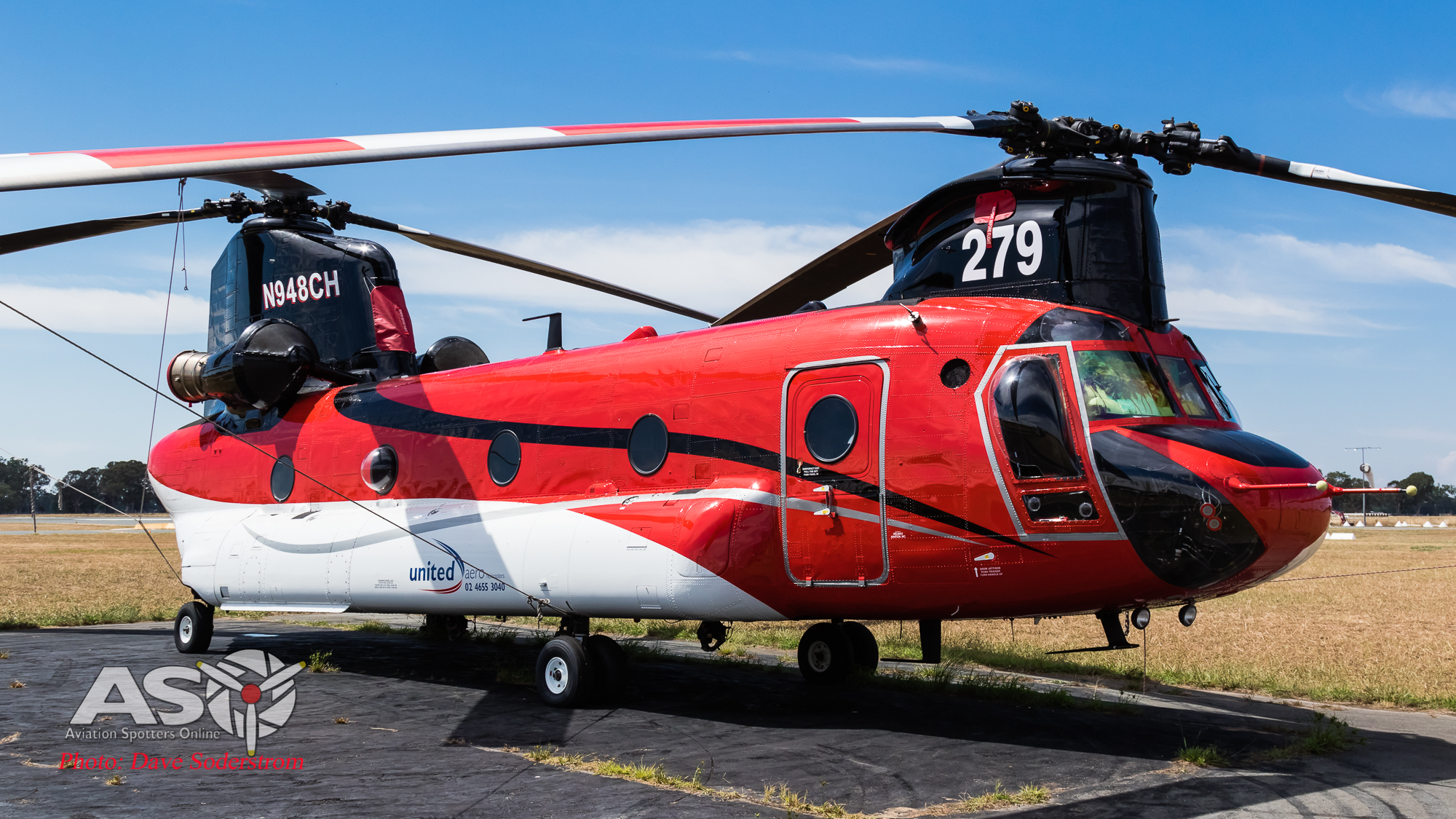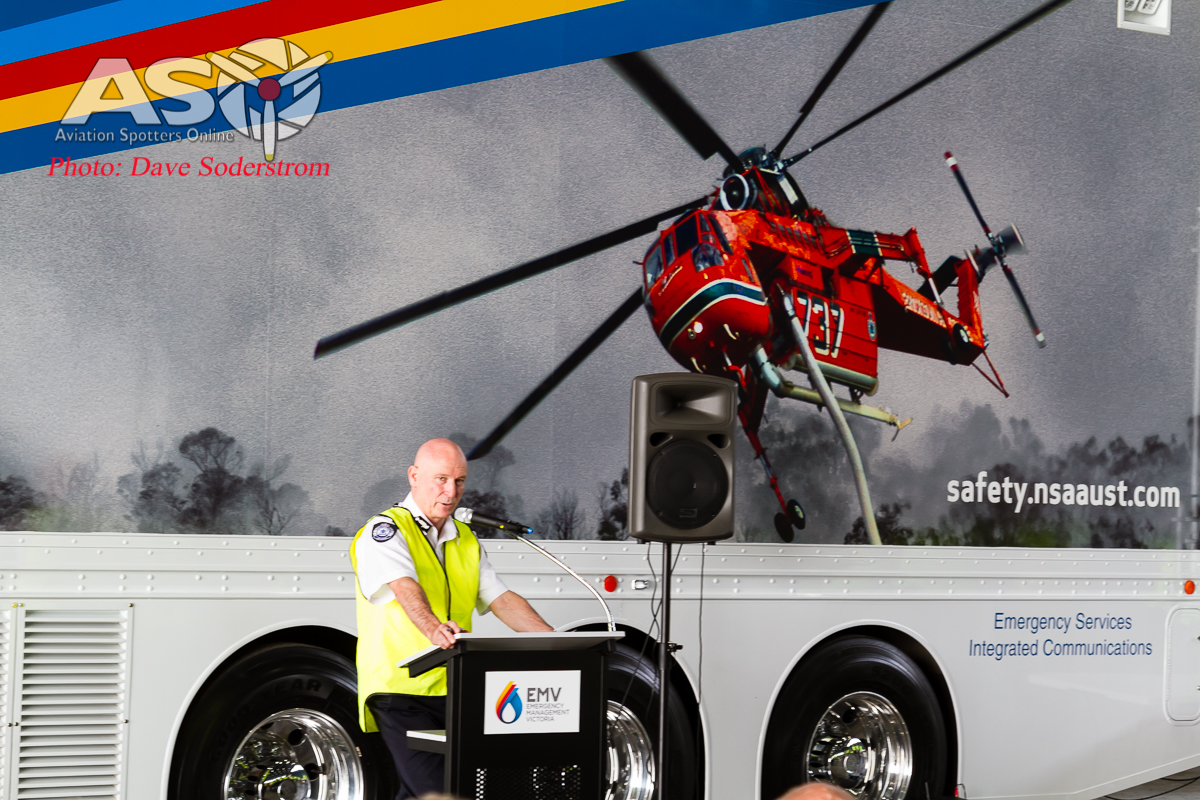
This fire season, a return of the Boeing CH-47 Chinook has seen it working on fires in New South Wales and Victoria. The Chook returned to be operated by Helimax Aviation Inc, in conjunction with local Camden based operator United Aero Helicopters, under a non-contracted call as required arrangement.

N948CH is seen soon after arriving at its Camden Home base for United Aero.
Helimax Aviation Inc. is based in Sacramento, California and has been serving the utility industries since 1996. The company prides itself on the variety of its work as well as the quality. It has a wide and varied fleet of helicopters to suit its customer’s requirements, which include examples of Airbus Helicopters AS350B3E, Boeing CH-47D Chinook and Sikorsky S-61N. The fleet is varied to allow for many different operations, including passenger transport, forestry fire fighting, precision long-line lift operations, to name just some of the capabilities.
Helimax Aviation’s Boeing CH-47D Chinook, N948CH started life as a United States Army CH-47C and was delivered as 74-22293. In 1990 it was upgraded to CH-47D standard. The Army sold the helicopter via auction in 2014. N948CH is one of 6 CH-47s currently in the fleet. This isn’t the first time Helimax and United Aero have flown the CH-47 in Australia. In 2016, N947CH was operated successfully and flew in the Wye River and Separation Creek fires that decimated 116 homes along the Great Ocean Road in Victoria.
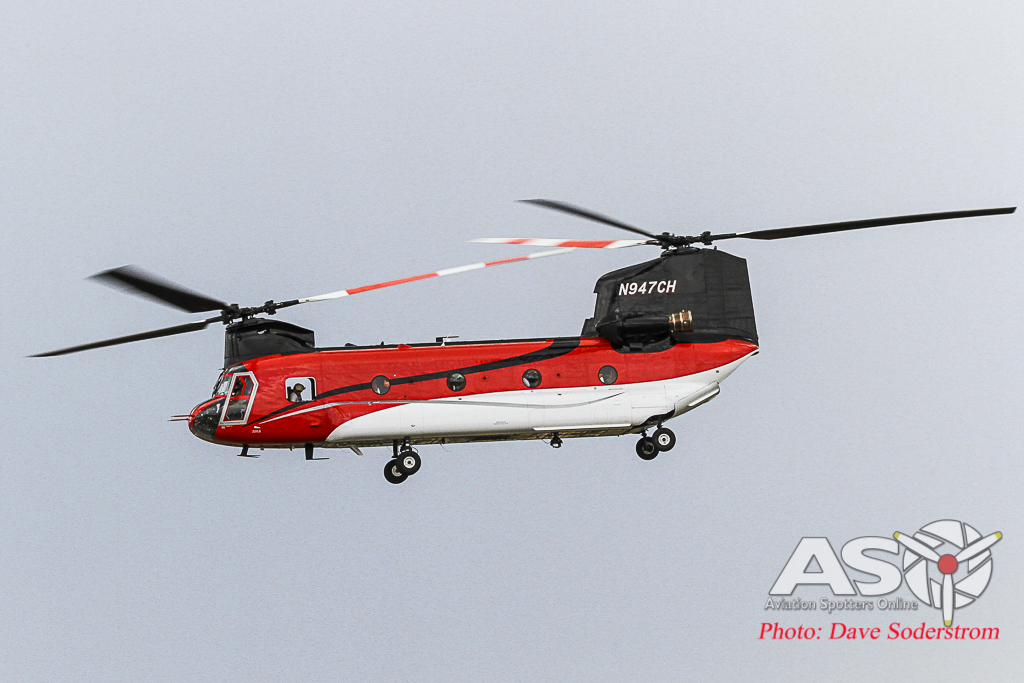
N947CH as seen in 2016
Operations in Australia 2017/18
Operating in Australia this season, the aircraft has been allocated the ‘Helitack 279’ callsign. The helicopter is flown during fire operations with a crew of three. Pilot, co-pilot and flight engineer who monitors internal operations. Ground crew is typically 5 engineers and a fuel truck driver. Once the Chook had arrived in Melbourne in November, it was quickly assembled and flown to the United Aero base at Camden. By December 2017, the aircraft was deployed at a single fire in N.S.W (where it dropped 232,000 litres of water in a staggering seventy-five minutes!). She was then moved to operate in Wangaratta in Victoria in early 2018.

While most firefighting aircraft have some sort of under slung tank fitted, the CH-47D is fitted with a synthetic long line, slung Powerfill BBXHL7600 Bambi bucket. The bucket fills to a maximum of 2000 gallons or some 7570 Litres making it a type 1 helicopter. To classify as a type 1 the aircraft needs to carry more than 2650 Litres of water in operations. All helicopter types are assigned a type designation based on their internal payload and water carrying capacity. The Bambi bucket has its own internal pumps to allow for filling in shallow dams and streams where it is unable to submerge the bucket fully. It takes around 70 seconds when using the five pumps. It takes 5 seconds when its fully submerged. The crew carries a spare bucket for all operations should one fail in some way. This classification puts it in the same category as the Erickson Air Crane.
The helicopter maintains its triple hook system as fitted and used by defence forces around the world which operate the type. The centre cargo hook (which is the main hook used) allows for an under slung load of 26,000 lbs or 11,793 kg. It is hydraulically actuated. The forward and rear hooks have a maximum load of 17,000 lbs or 7711 kg each. If the forward and rear hooks are used in tandem on a single load, this is raised to 25,000 lbs or 11,339 kg maximum load.
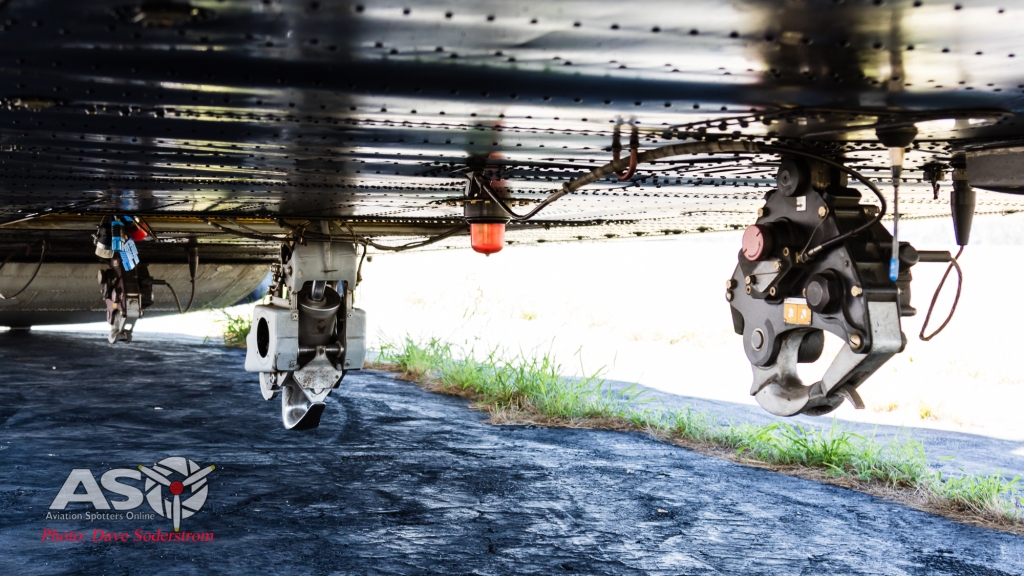
Inside the large fuselage, it’s very bare, with anything non-essential to fire fighting and operations removed. A 370L tank is mounted on the forward floor. This is used for mixing the Bambi bucket with liquid foam, which is a wetting agent should the fire require this. Mixed at a ratio of 0.2%, it is adjusted to suit the water volume in the bucket below. It is then pumped into the bucket and agitated from the natural wind effect whilst flying.
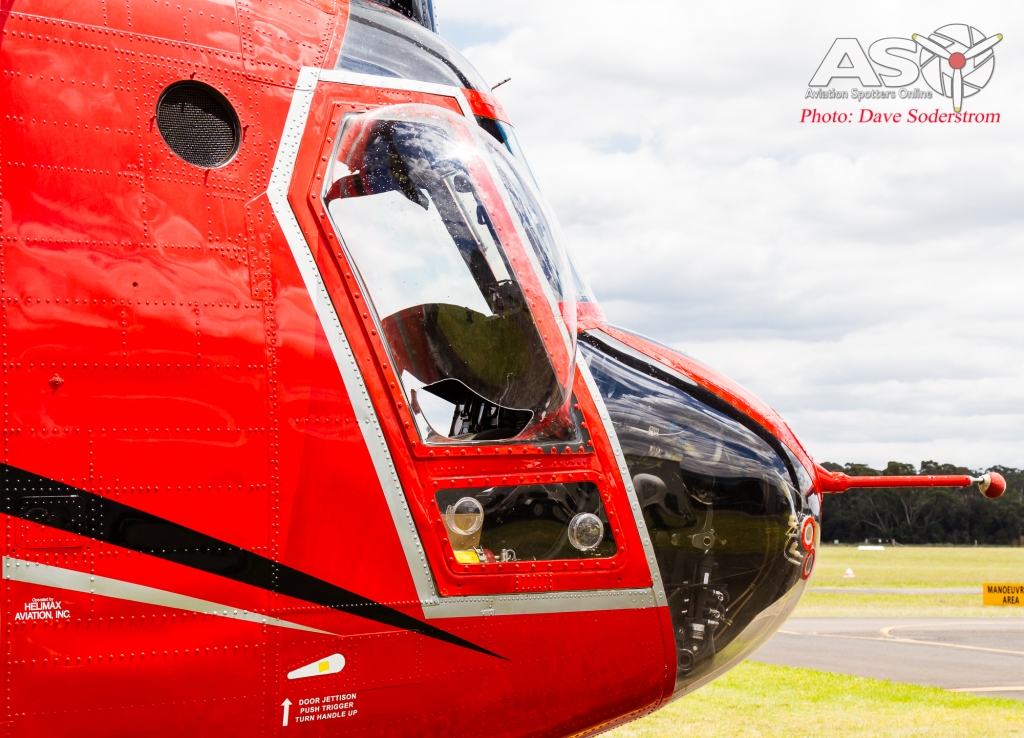
Like most firefighting helicopters the CH-47 has enlarged windows with downward openings to allow the crew to look and monitor drops so as to hit the target. One is fitted on either side so both crew are able to look down on the drop.
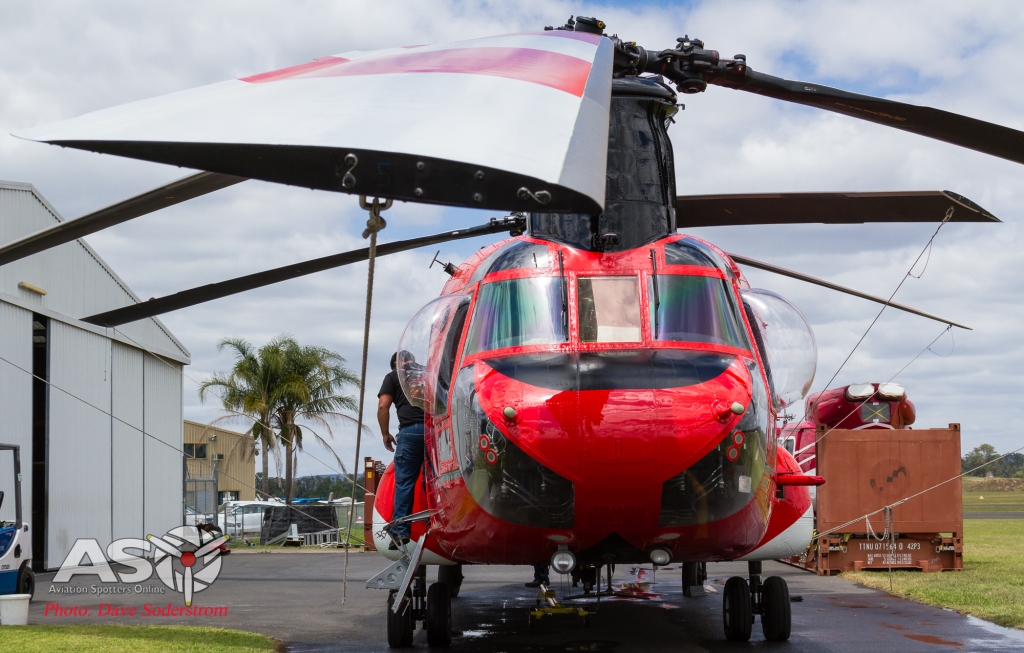
Flight Statistics
The engines that power the ‘Chook’ are the same model as fitted to the modern and in-production CH-47 ‘Foxtrot’ model. Powered by two Honeywell T55-GA-714A turboshaft engines with FADEC (fully automatic digital engine control), the engines are rated at 4,733 bhp (each). N948CH operates well below the maximum power setting when in normal flight operations – in fact, power is selected to 50% on both engines. Should the helicopter ever have to shut down an engine in flight in the event of an emergency, the helicopter can maintain flight as normal (depending on the altitude and conditions of course) with an increase to the engine that has no issue.
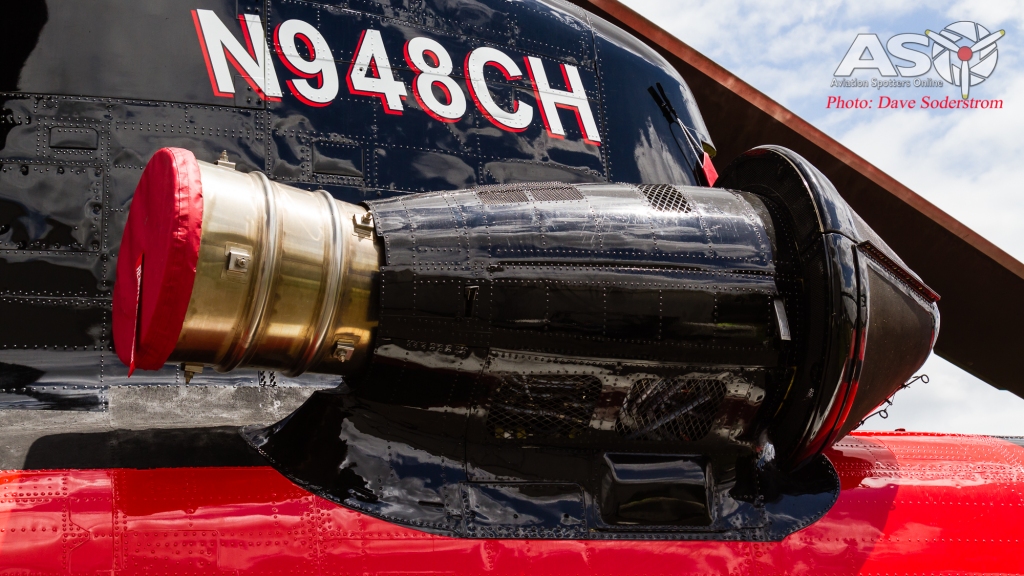
The basic empty weight is approximately 24,000 lbs or 10,886 Kg. Fully loaded with 7,000 lbs of fuel it has a max gross weight of 50,000 lbs or 22,670 kg.
The CH-47 has a 140 kts max air speed (315 km/h), and has approximately a four hour endurance which in transit. This drops to around 2.5 hrs endurance during firefighting operations.
CH-47D Chinook Specifications
Crew: 3
Length: 98 ft 10 in (30.1 m)
Rotor diameter: 60 ft per disk (18.3 m)
Max takeoff weight: 50,000 lbs (22,680 kg)
Performance
Maximum speed: 140 knots
Cruise speed: 130 knots
Range: 400 nm
Endurance: 4 hrs
Service ceiling: 18,500 ft
ASO wishes to thank Helimax Aviation, United Aero Helicopters and Jeremy from Helimax for their assistance with the preparation of the article. Fly safe team.
Dave


